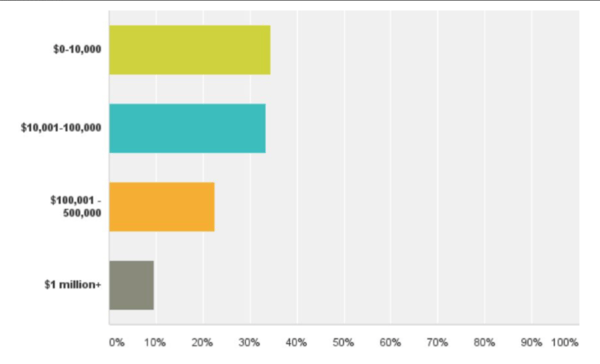Containerization and microservices have revolutionized cloud environments and architectures over the past several years, allowing businesses to build, deploy and manage applications faster through continuous delivery. This, in turn, has pushed companies to move legacy applications and core business functions to digital and hybrid environments.
The momentum behind containers certainly isn’t showing signs of slowing down in 2018, as businesses continue to recognize their benefits, such as increased scalability and limited cybersecurity attacks.
What are containers?
At their core, containers break down web applications and provide businesses a flexible, portable platform to organize and distribute applications that are typically developed through microservices. This model is a departure from traditional, monolithic architectures that use virtual machines and physical servers to run the entire application ecosystem on one centralized machine.
Since containers are self-contained and resource-isolated application environments with a virtualized operating system, companies can mix and match containers; connect to public, third-party containers; and optimize network efficiency based on specific needs. This increased level of flexibility gives administrators more control over resource allocation and scaling, helping to better optimize their network and build out a successful ecosystem.
In 2017, companies took an increased interest in containerization. According to The Portworx Annual Container Adoption survey, 32 percent of companies spent $500,000-plus on license and usage fees for container technology. This is up a whopping 5 percent from the previous years’ survey, indicating a significant growth trend in the container market.
 The survey also indicates that persistent storage is still the biggest challenge for businesses using containers, with 26 percent of respondents reporting it as the most difficult issue to overcome. Interestingly, only 7 percent of respondents said container security was the top challenge –– this is a surprising statistic, especially with the highly publicized cyberattacks of 2017.
The survey also indicates that persistent storage is still the biggest challenge for businesses using containers, with 26 percent of respondents reporting it as the most difficult issue to overcome. Interestingly, only 7 percent of respondents said container security was the top challenge –– this is a surprising statistic, especially with the highly publicized cyberattacks of 2017.
The good news for both businesses using containers and container service providers — such as Docker (a popular Linux container and container management system) and Kubernetes (a container orchestration tool) — is that implementing within containerized environments could potentially decrease the likelihood of cyberthreats.
Evolution of container technology
Container tools are continuing to show up in more and more company stacks, or all the software systems used at an organization, which makes sense given the increasing level of investment. While still in their infancy as a technology, containers are beginning to replace virtual machines worldwide, and the market is expected to grow from an estimated $1.5 million in 2018 to nearly $3 billion in 2020.

Major types of container solutions in 2018
While the container market as a whole has been dominated since its conception by the likes of Docker and Kubernetes, more companies are gaining traction, and the container ecosystem continues to evolve and expand. Advancements in containerization have clearly created a growing industry that has allowed microservices to be utilized by countless SaaS providers. The containerization, or container as a service, market grew 40 percent from 2016 to 2017, and is projected to reach new heights in 2018.
Coupled with microservice trends, the container ecosystem has broken off into multiple subsets that allow businesses to optimize either in-house or publicly managed containers. Products have been, and will continue to be, developed to manage and improve the performance of applications operating in a containerized environment.
1. Container engines
Container engines power operating system-level virtualization in containerized applications, essentially doing what virtual machines do in a monolithic model. These tools run a single instance on a contained, isolated server, meaning a container engine will run without being affected by other business applications.
The evolution of continuous development and deployment will continue to become more efficient as the container market matures. Container engines are essential to any digital ecosystem, especially as enterprise companies continue down the path of digital transformation and the migration of applications to third-party providers such as AWS and Azure.
Major Players:
LXC, Solaris Zones, OpenVZ
Defining Features:
— Abstraction
— Server Isolation
Key Benefits:
— Resource Independence
— Simplified Migration
— Increased Security
2. Container management
Container management software is used to simplify administrative processes to automate container creation, deployment and scaling efforts. This, like any other type of automation, saves companies oodles of time and money, as well as decreases the level of complexity and makes the environment more secure.
Advancements in serverless technology make this an interesting space, as platform giants, such as Amazon, seek to provide companies with increased levels of application management. While the enterprise has shown reluctance to trust third parties with core business functions in the past, 2018 should see more companies move server and database management to the public cloud.
Major Players:
Docker, Apache Mesos, Apcera
Defining Features:
— Container Storage
— Container Testing Tools
— Container Deployment Capabilities
Key Benefits:
— Container Replication
— Optimized Execution Scheduling
— Improved Resource Allocation
3. Container orchestration
Container orchestration software is exactly what it sounds like: It interacts with and ensures harmony for all the applications running inside their respective containers. These products aim to utilize performance within containers and allow developers to quickly deploy, update or rollback applications.
These tools will be of particular interest to the enterprise in 2018, as they are usually used by companies that have to maintain a significant number of containers. The way containers and microservices play together is of the utmost importance for a business looking to scale and extend reach. As more businesses digitize or become hybrid, these solutions offer plenty of flexibility when building out an ecosystem.
Major Players:
Docker Swarm, Kubernetes, Marathon
Defining Features:
— Load Balancing
— Clustering Tools
— Deployment Scheduling
Key Benefits:
— Failover Management
— Large-Scale Resource Allocation
— Increased Scalability
These subsets, along with runtime, container monitoring, container networking, container registry and service discovery tools, will play an increasingly large role as containers continue to evolve in 2018.
Container predictions
- More types of service applications: As the enterprise builds digital relationships with third-party PaaS and IaaS providers, the container market will be flooding with opportunities to offer niche service applications in 2018.
- More business functions will move to the public cloud: The flexibility provided by digital platforms, and the concept of ecosystems and serverless, will likely see the enterprise shift toward the adoption of publicly hosted, containerized production environments.
- Container management will be the focus of third-party providers: Amazon’s EC2 is a good example of this, as it continually aims to manage all computer management functionality with the assistance of AWS Lambda and serverless technology.


 by Samudyata Bhat
by Samudyata Bhat
 by Samudyata Bhat
by Samudyata Bhat
 by Maksim Blishchik
by Maksim Blishchik